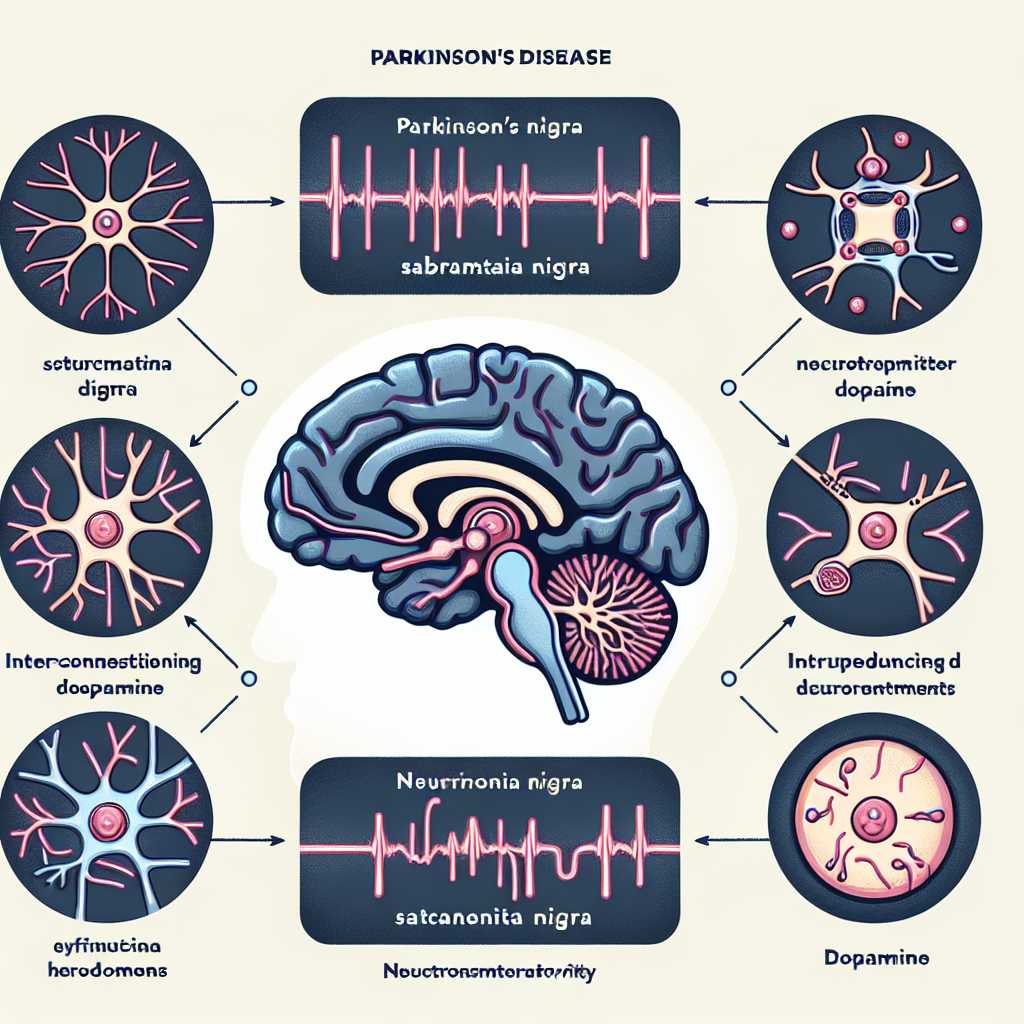Understanding Parkinson’s Disease: An Overview
Parkinson’s disease (PD) is a progressive neurological disorder that chiefly affects the motor system, leading to distinctive tremors, stiffness, and the slowing of movement as its most striking symptoms. This condition has a significant impact on the lives of those diagnosed and their families. In this comprehensive article, we will delve into what Parkinson’s disease is, its causes, symptoms, stages, treatments, and the current state of research.
What is Parkinson’s Disease?
Parkinson’s disease is classified as a degenerative disorder of the central nervous system. Its primary characteristics are the death of dopamine-producing neurons in a region of the brain known as the substantia nigra. Dopamine is a neurotransmitter that plays a crucial role in sending messages to the parts of the brain that control movement and coordination. As Parkinson’s disease progresses and the level of dopamine decreases, it becomes harder for people to control their movements, balance, and muscle function.
Understanding the Causes of Parkinson’s Disease
The causes of Parkinson’s disease remain largely unknown, but several key factors have been identified through research. Genetics can play a role in Parkinson’s disease; mutations in specific genes have been linked to the disease. However, these genetic causes are uncommon except in cases where many family members are affected across multiple generations.
Environmental factors may also contribute to the development of Parkinson’s disease. Exposure to certain toxins or environmental factors such as pesticides and heavy metals has been hypothesized to increase an individual’s risk. Despite extensive study, there is no conclusive evidence pinpointing a single cause for Parkinson’s disease, suggesting that both genetic and environmental factors play a contributory role.
Symptoms and Diagnosis of Parkinson’s Disease
Symptoms of Parkinson’s disease usually develop slowly over years. The progression and order of symptoms can vary from one person to another due to its diverse nature. The main symptoms include:
– Tremor: Shaking typically begins in a limb, often a hand or fingers.
– Bradykinesia: Slowness of movement which can make simple tasks difficult and time-consuming.
– Rigidity: Muscle stiffness can occur in any part of the body.
– Postural instability: Impaired balance and coordination can lead to falls.
Diagnosing Parkinson’s isn’t straightforward as there is no definitive test for it. Physicians largely rely on medical history, signs and symptoms, physical and neurological examinations, and ruling out other conditions that might mimic Parkinson’s disease.
The Stages of Parkinson’s Disease
The progression of Parkinson’s disease can be described in five stages:
– Stage 1: Mild symptoms that do not interfere with daily activities.
– Stage 2: Symptoms worsen, impacting daily activities with tremor or rigidity taking place on both sides of the body.
– Stage 3: Loss of balance and slowness of movement become more apparent.
– Stage 4: Symptoms become severe and limiting; assistance with daily activities becomes necessary.
– Stage 5: The most advanced stage; individuals may be unable to walk or tend to daily activities and might require full-time care.
Treatment Approaches for Parkinson’s Disease
While there is currently no cure for Parkinson’s disease, various treatments can provide relief from symptoms:
– Medications: To increase dopamine levels or affect other neurotransmitters related to movement.
– Deep Brain Stimulation (DBS): Electrophysical stimulation of brain areas controlling movement.
– Physical Therapy: To improve mobility, balance, and strength.
– Occupational Therapy: To maintain skills needed for daily living tasks.
Advancements in Research on Parkinson’s Disease
Research is constantly progressing regarding chronic diseases like Parkinson’s. Scientists are exploring new treatments—including gene therapy, stem cell transplants, and neuroprotective agents—that provide hope for better management or even a cure one day.
Early recognition and pinpointing biomarkers for early detection are partly where revolutionary science foresees essential room for optimism.
Notes
Image Description
A picture displaying different brain regions involved in Parkinson’s disease including the substantia nigrea. There would be icons representing neurons with Connecting lines depicting neurotransmitter activity indicating normal flow (at which dopamine functions) contrasted with impaired movement indicating Parkinson’s pathology.
